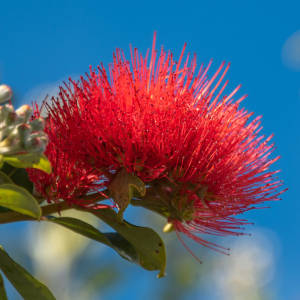Making its Escape
This shot is take of a neighbour's wonderful dahlia. I didn't go for a walk today as I am still am not feeling that well.
It was another lovely day until late afternoon when the clouds arrived and they say rain is on its way.
The original dahlia was much more humble than today’s cultivated species and originated from a simple Mexican wildflower. It was so common as to be considered a weed, and with only only eight petals and few colors. Very little is known about the dahlia prior to the time of the Aztecs. It is said that the Aztecs used parts of the dahlia for food and medicines, but most of this information cannot be verified since much of the Aztec culture was destroyed following the Spanish Conquest.
In 1570 King Phillip II of Spain sent Francisco Hernandez to Mexico to study the natural resources of the country. He stayed for 7 years and described plants that resemble dahlia species under the names, Acocotli and Cocoxochitl.
The first drawings were made of the dahlias by an associate who was traveling with Hernandez and were published in 1651. The next time dahlias appear in history is 1789 , the director of the Botanical Garden at Mexico City sent plant parts to Antonio Jose Cavarilles, on staff at the Royal Gardens of Madrid in Spain. From these he grew and flowered 3 new plant forms, Dahlia pinnata, D. rosea, and D. coccinea. He named the genus after Andreas Dahl, a Swedish botanist. Seed and plant parts from Cavanilles dahlias were sent throughout Europe beginning in the early 1800’s.
It was during this time that the scarlet Dahlia coccinea was crossed with a mauve-flowered species, possibly D. pinnata, which ultimately resulted in the first modern dahlia hybrid (Lawrence 1929). The new hybrid was easy to grow and hybridize so they quickly became very popular in European and American gardens.
Through the 1800’s and 1900’s thousands of new forms were developed, with 14,000 cultivars recognized by 1936 and in the past century, nearly 50,000 named varieties have been listed in various registers and classification lists. All of these dahlia forms were hybridized from at least two, and possibly all three of the original Dahlia species from Mexico. The genus Dahlia consists of 35 species all of which are found in the highlands of Mexico and Central America. Most species have very restricted ranges and are probably rare. Very few are available to the dahlia grower.
This is just a brief history, and there is much more information regarding the development of the modern dahlia. Reference: Encyclopedia of Dahlias, by Bill McClaren.

Comments
Sign in or get an account to comment.


